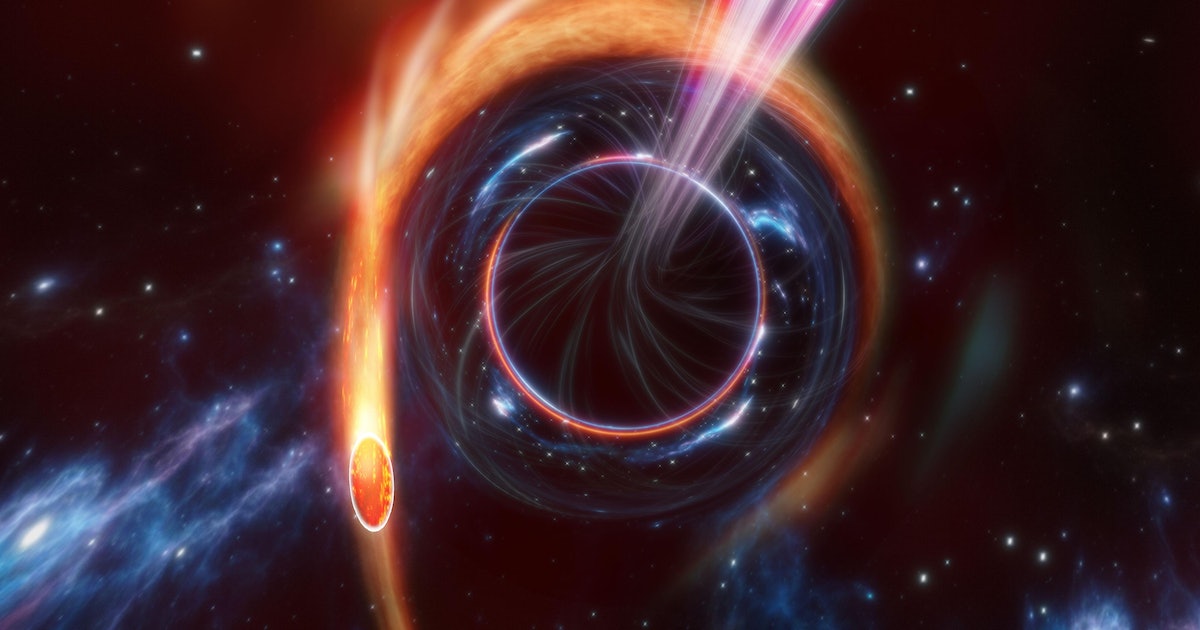Astronomers are investigating the circumstances of the tidal destruction of the star, which they observed in 2014. They found out that it was much more massive than previously thought, and found out the details of how it was destroyed by a supermassive black hole.

Incredibly bright death of a star
Astronomers working with the Chandra and XMM-Newton space X-ray telescopes recently published the results of a kind of investigation into the circumstances of the death of a large star that was observed in 2014.
Then scientists saw how, in a galaxy 290 million light-years away from us, a supermassive black hole located in its center captured the forces of gravity of a luminary that carelessly approached it and tore it to pieces. The event was named ASASSN-14li.
Astronomers have been observing similar phenomena more or less regularly in recent years. They are called tidal disruptions and are visible from great distances. Among them, ASASSN-14li is the closest to us and the brightest. And now it turns out that the mass of the star in it was the largest.
Back in 2017, scientists estimated the mass of the star that died during the ASASSN-14li event as being 60 percent higher than the solar one. However, a new study shows that it was significantly larger.
Research results
Now what’s left of the star destroyed during ASASSN-14li is elongated clouds of heated gas slowly falling on a supermassive black hole. It is on their research that space telescopes have focused. They conducted spectroscopic studies and found that it mainly consisted of nitrogen and carbon.
These data allowed a new estimate of the mass of the star, which was destroyed as a result of the tidal destruction of ASASSN-14li. It turned out to be approximately equal to three masses of the Sun. This makes the star the largest among those that died from a black hole.
However, this year scientists observed an event of tidal destruction, which was called “Scary Barbie“. There, the mass of the star was approximately 14 times higher than the solar one. However, astronomers are still unsure not only of the estimates, but even of the interpretation of what they saw.
As for the new data, they have already told a lot about supermassive black holes. For example, scientists have finally convinced themselves that massive clouds of gas active in the X-ray range are precisely the remnants of destroyed stars. Previously, scientists assumed that they could simply be ejections from the singularity.
In addition, the researchers were interested in the fact that the star that was destroyed as a result of ASASSN-14li was very similar in mass to moderately large luminaries forming clusters around a supermassive black hole in the center of the Milky Way. Presumably, such clusters exist in other galaxies.
According to phys.org.
Follow us on Twitter to get the most interesting space news in time
https://twitter.com/ust_magazine
